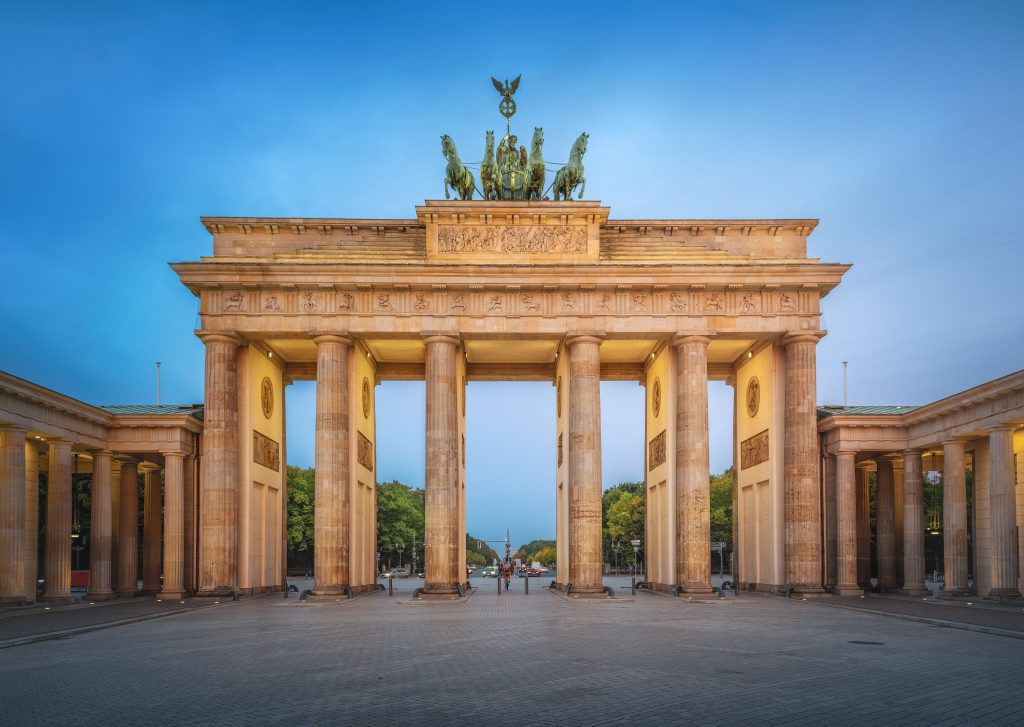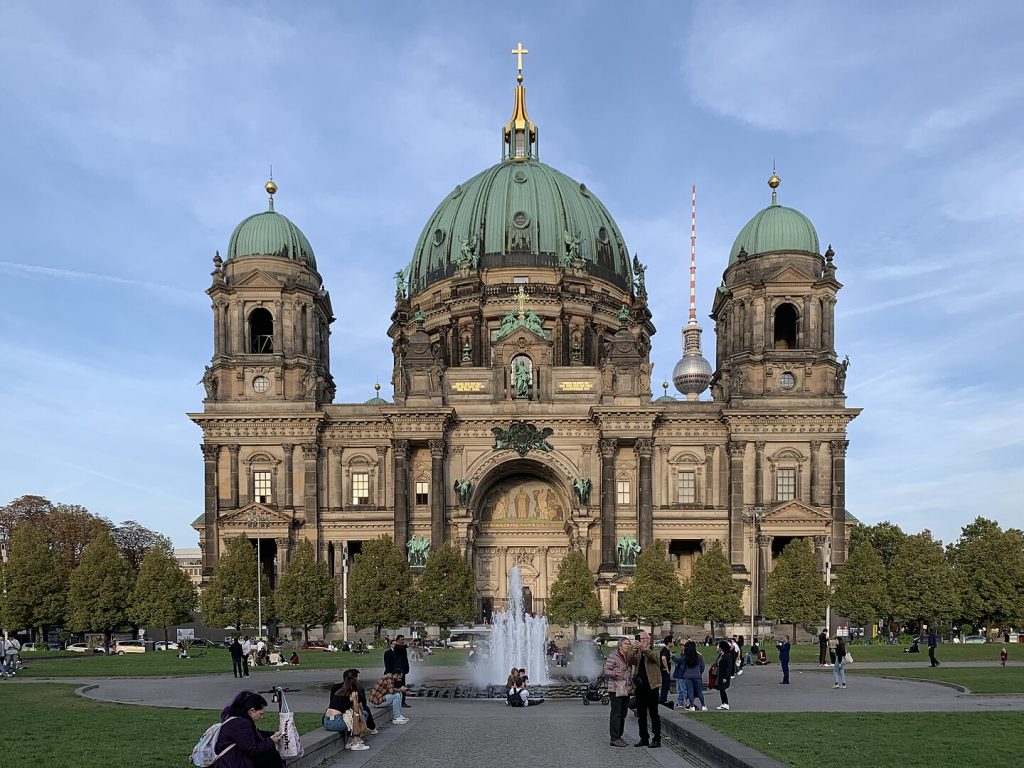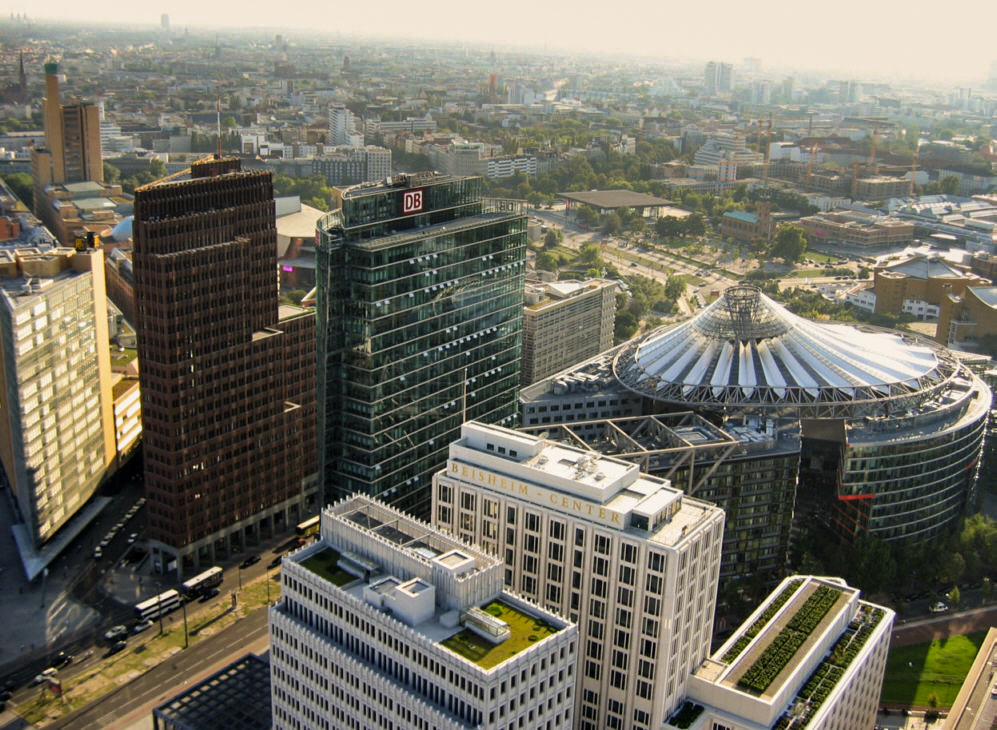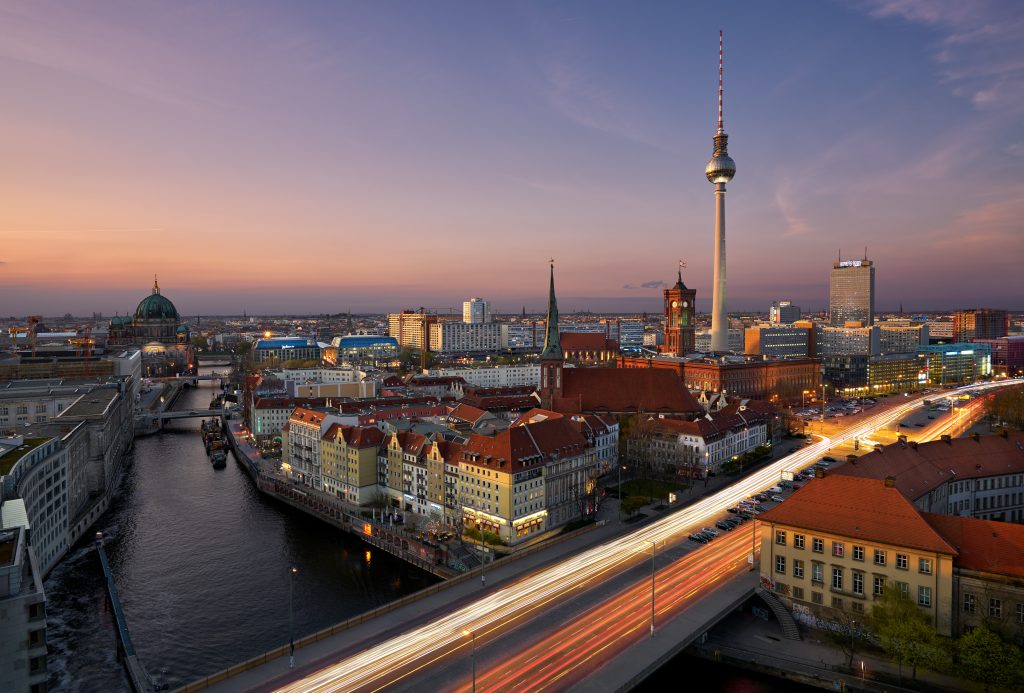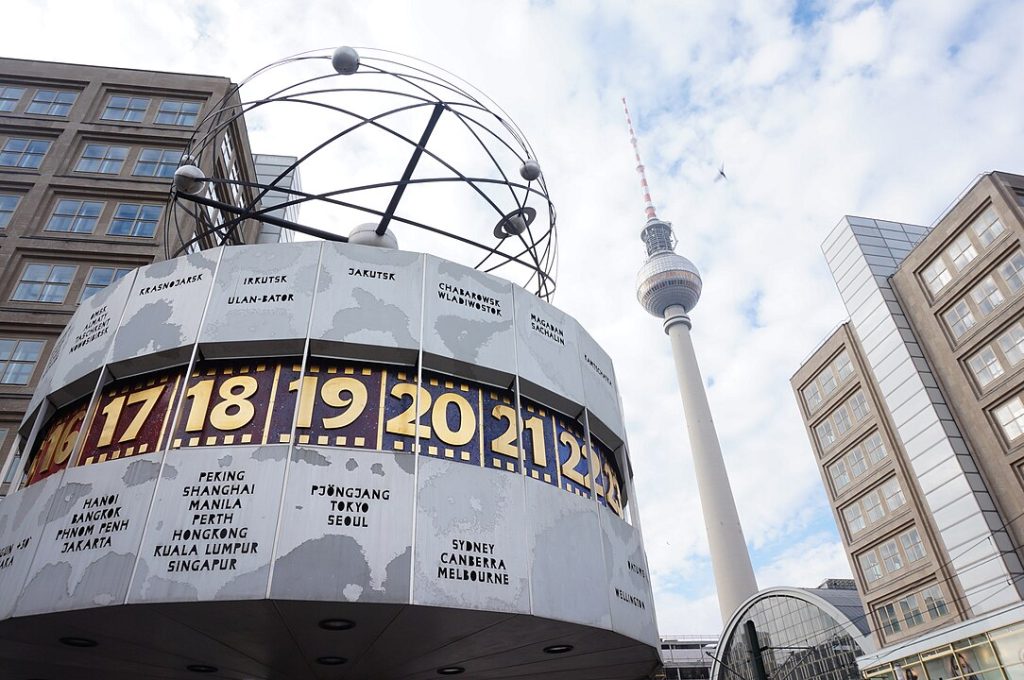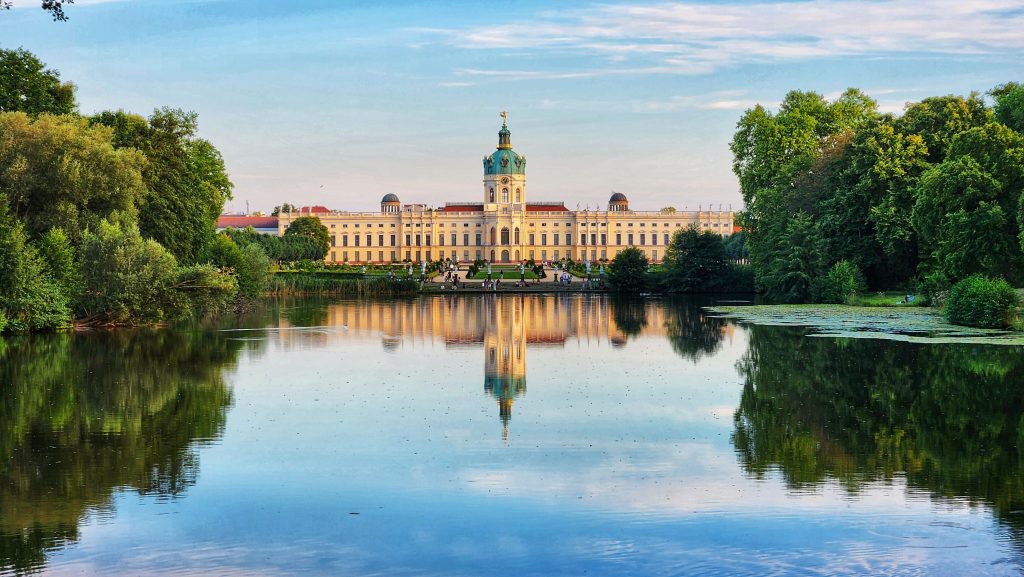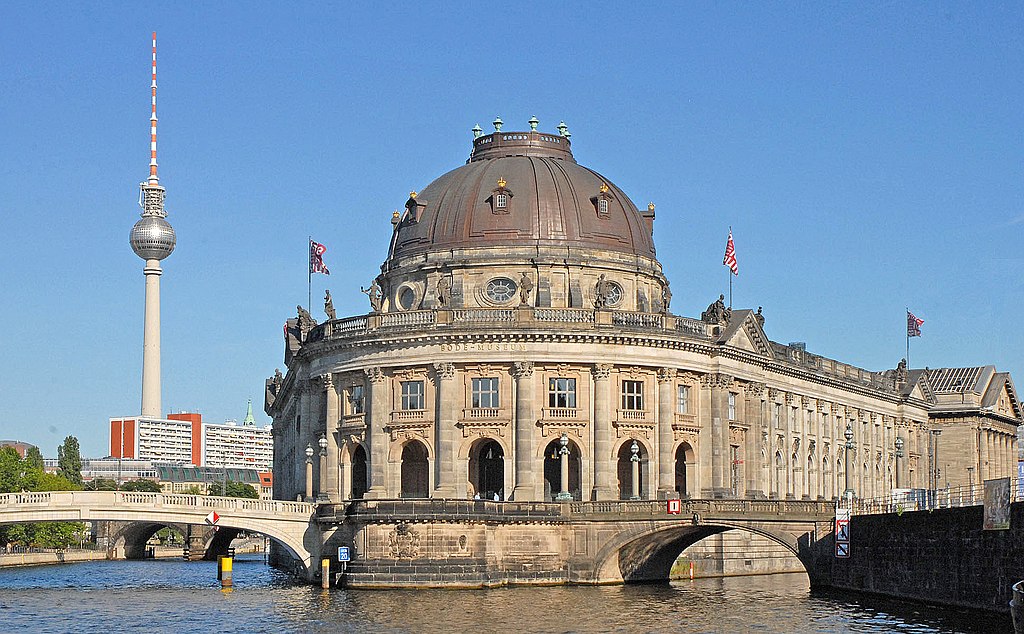- 1️⃣ History of Unter den Linden - a royal route through the heart of Berlin
- 2️⃣ Why the name? The avenue under the lindens and its symbolism
- 3️⃣ Brandenburg Gate icon ending the avenue
- 4️⃣ Monument to Frederick the Great - the king on horseback in the center of the avenue
- 5️⃣ Humboldt University and State Opera - centers of science and art
- 6️⃣ Temples and palaces - architecture along Unter den Linden
- 7️⃣ Unter den Linden Walk - what to see along the way?
- 8️⃣ Avenue in the shadow of history - destruction and reconstruction after the war
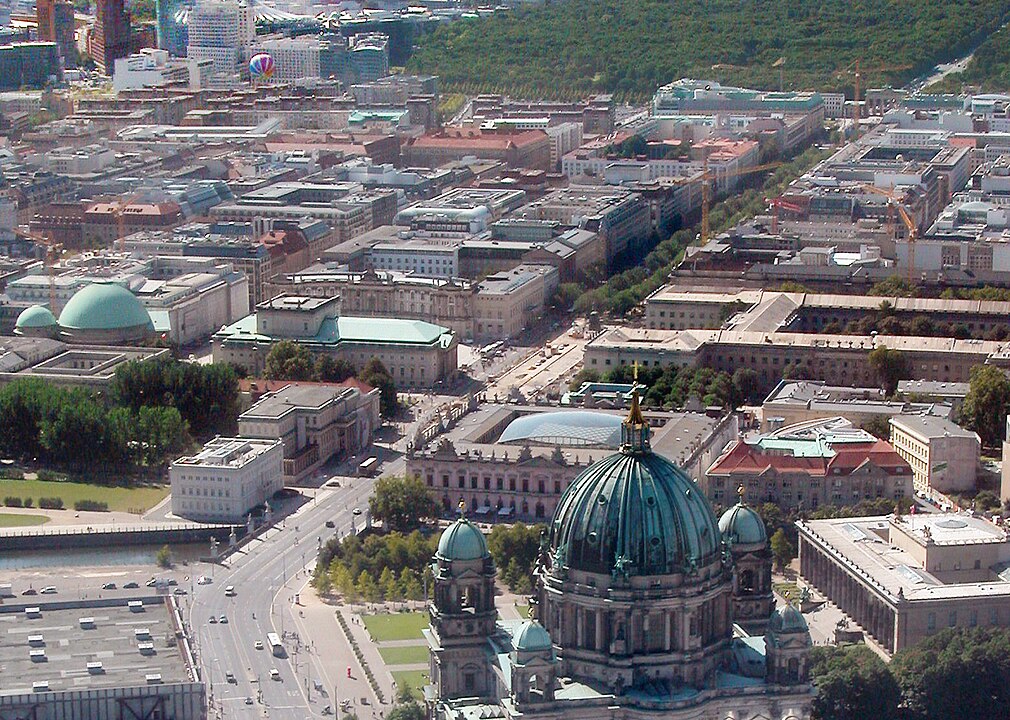
In the very center of Berlin, between the Brandenburg Gate and Museum Island, stretches one of Europe's most famous streets. Unter den Linden, i.e. "Under the Lindens". This elegant avenue is not only the city's main walking route, but also a living history museum, in which royal residences, monuments and university edifices tell the story of the German capital's power and transformation.
Over the centuries, the avenue has witnessed triumphs and tragedies, the center of cultural, political and intellectual life. Today it delights harmony between past and present, inviting tourists for a unique walk in the shadow of linden trees and history.
1️⃣ History of Unter den Linden - a royal route through the heart of Berlin
🎢 A family trip to the German capital?
👉 Top 10 - attractions for children in Berlin
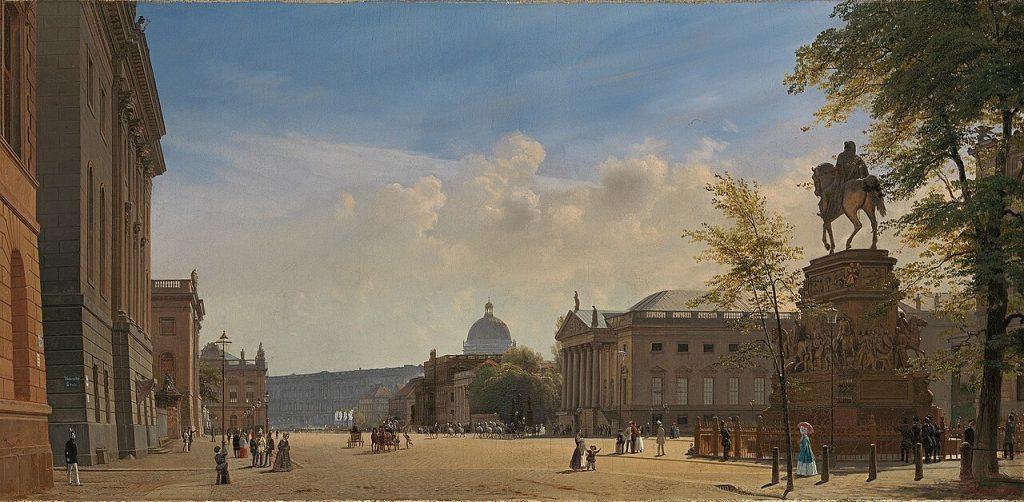
Today Unter den Linden it's elegant avenue full of monuments, museums and prestigious institutions, but its history dates back to the 17th century and is inextricably linked with the history of Prussia and Berlin itself. Transformed from a hunting road to a royal thoroughfare, it has witnessed political change, military might, wartime destruction and post-war reconstruction.
💠 Beginnings as the way to the palace
Unter den Linden Was established in the 1750s on the initiative of the Elector of Frederick William, which commissioned the construction of a representative road connecting the City Palace (Berliner Schloss) z Tiergarten - a hunting ground at the time. Along the tract, linden trees were planted, which in time gave the avenue the name it is known for today.
💠 Representative axis of Prussia and the Empire
In the 18th and 19th centuries, the avenue became a the main axis of Berlin - It attracted the elite, the royal court and intellectuals. It was here that such institutions as Humboldt University, State Opera or libraries. Unter den Linden was the scene of military parades, parades, as well as protests and demonstrations.
💠 Destruction and reconstruction
During World War II The avenue suffered severe damage. Bombings demolished many townhouses and public edifices, and the former splendor was extinguished for decades. It was only after the reunification of Germany Unter den Linden has undergone a comprehensive revitalization and today once again impresses as one of Berlin's most representative places.
2️⃣ Why the name? The avenue under the lindens and its symbolism
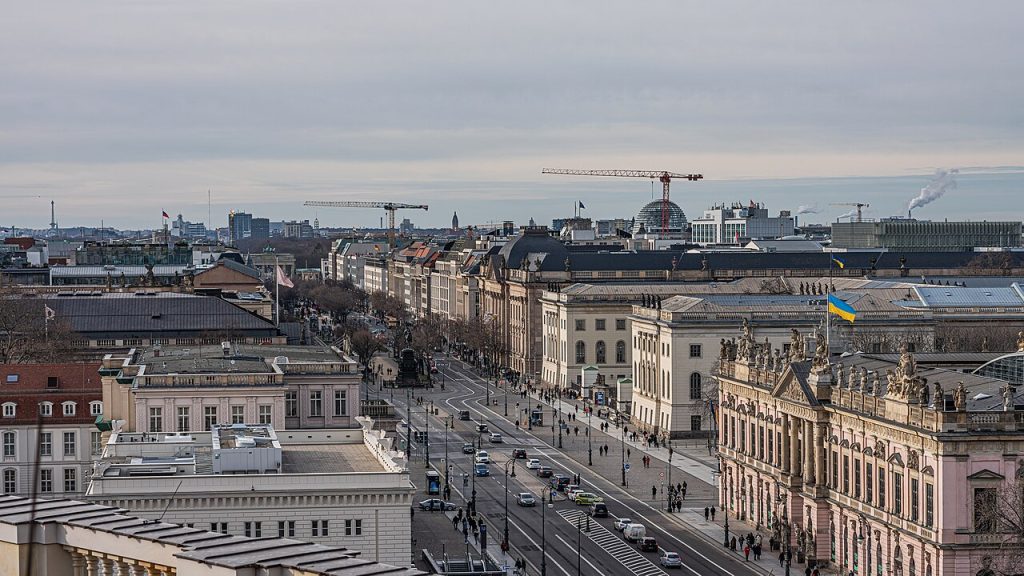
Name Unter den Linden, i.e. "Under the Lindens", the avenue owes to the trees that have marked its route since its inception and given it a unique, almost park-like character. Linden were planted on both sides of the road as early as the 17th century, giving the site not only aesthetics but also symbolic meaning.
💠 Linden tree - tree of peace and wisdom
In German and Slavic culture, the linden tree has for centuries been a symbol of the peace, wisdom and togetherness. Courts, meetings and deliberations were held under the linden trees. Planting them along the royal route gave the avenue a humanistic and civic dimensions, which contrasted with the military might of the monarchy.
💠 Changes and restoration of tree stands
Over the centuries, trees have repeatedly fallen victim to the wars, urbanization and diseasebut they have always returned - like a green symbol of survival and rebirth. The last major revitalization and replanting of linden trees took place in the 21st century, and today the avenue once again delights with its greenery, especially in spring and summer.
💠 Not just the name, but the character of the place
Thanks to the linden trees, the avenue has gained unique character - It is both stately and pedestrian-friendly. Walk Unter den Linden is not only contact with history, but also with nature in the heart of a big city.
3️⃣ Brandenburg Gate icon ending the avenue
🌆 First time in Berlin?
👉 Berlin's top 15 attractions
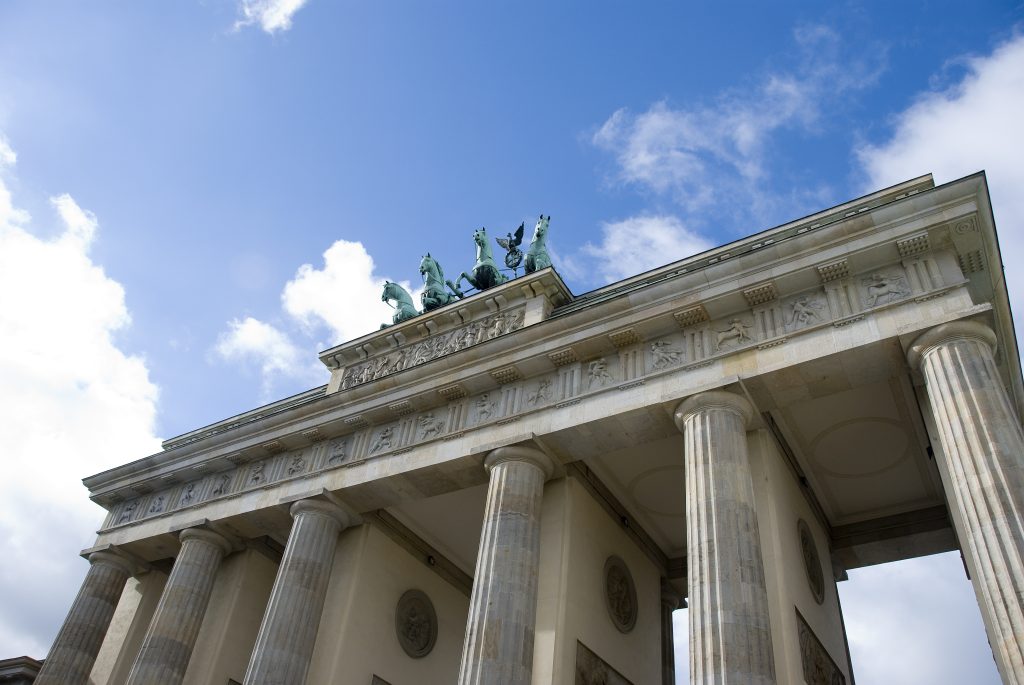
At the western end of the Unter den Linden rises one of Germany's most recognizable symbols - the Brandenburg Gate (Brandenburger Tor). This monumental structure, inspired by Athens' Propylaeum, is not only a striking end to the avenue, but also a monument to the history and transformation of Berlin.
💠 Rise and classicist form
The gate was erected in the years 1788-1791 on the initiative of the king Frederick William II As a symbol of peace. It was designed by Carl Gotthard Langhans, and its architecture, based on the Classical style, was meant to resemble the power and order of antiquity. At the top was placed quadriga - a chariot driven by the goddess of victory.
💠 Silent witness to history
Over the centuries, the Brandenburg Gate has been the backdrop for many historical events - triumphal entries, military marches, demonstrations and speeches. During the Cold War, it was located right next to the Berlin Wall, in an inaccessible border zone - then became a symbol of the Germany's division and hopes for reunification.
💠 Today: open and symbolic
After the fall of the wall in 1989, the Brandenburg Gate once again became accessible to everyone - pedestrians, tourists and locals. Today it a place for meetings, celebrations and New Year's parties, as well as key landmark Ending the Unter den Linden walk.
4️⃣ Monument to Frederick the Great - the king on horseback in the center of the avenue
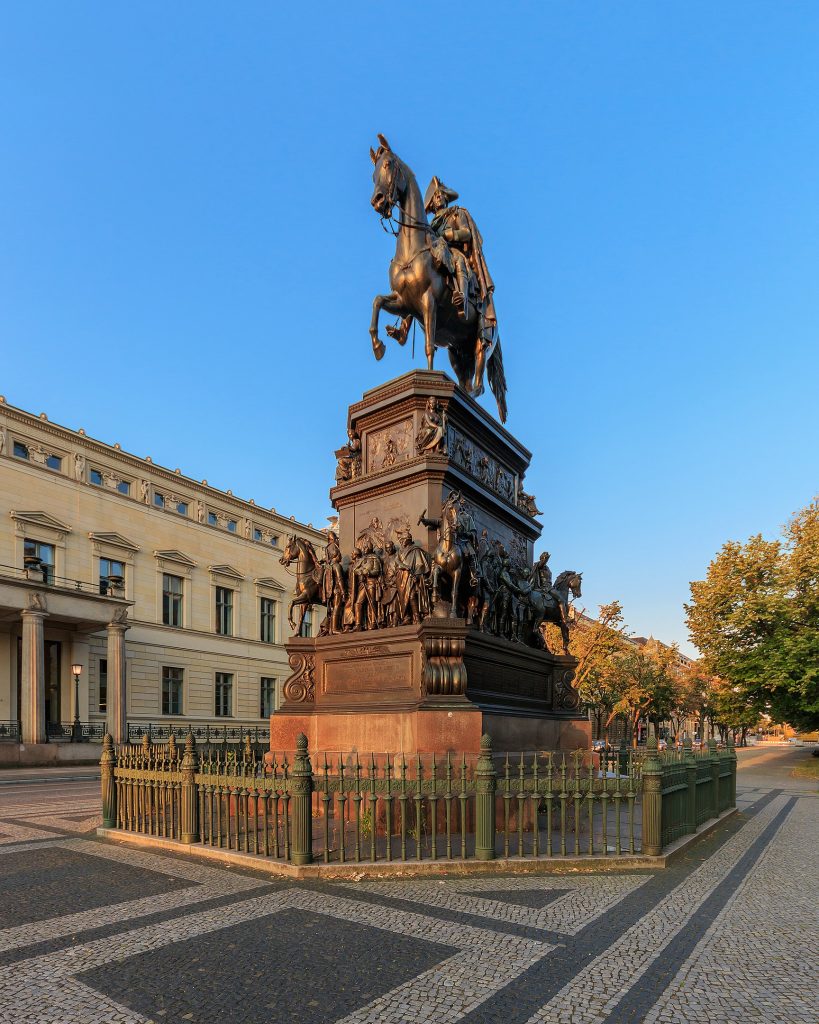
Walking along Unter den Linden, it's hard not to notice the massive horse monument standing almost in the middle of the avenue. It's Monument to Frederick the Great (Friedrichsdenkmal) - a tribute to one of Prussia's most prominent rulers, whose reign became a permanent part of Berlin's history.
💠 Monumental sculpture and its symbolism
The monument was unveiled in 1851, and its author was a well-known sculptor Christian Daniel Rauch. Presents Frederick II the Great on horseback, wearing a distinctive uniform and a three-brimmed hat, surrounded by figures of soldiers, scientists and artists of his era. The whole piece is made of bronze and set on a massive granite base.
💠 Culture, war and reform
Frederick the Great was not only an outstanding military commander, but also a patron of the arts, philosopher and reformer. The monument commemorates his role as a university founder, law reformer and creator of modern state institutions. His presence in the heart of Berlin is meant to serve as a reminder of Prussia's ambitions as an enlightened state.
💠 Turbulent fate of the monument
During World War II, the monument was dismantled, and after the war - for ideological reasons - it was hidden. Only in 1980s The decision was made to renovate it and restore it to its former place. Today it once again stands proudly on Unter den Linden as a symbol of heritage and continuity of history.
5️⃣ Humboldt University and State Opera - centers of science and art
📚 See Berlin from the side of the exhibits and displays
👉 Top 10 - museums that are really worth visiting
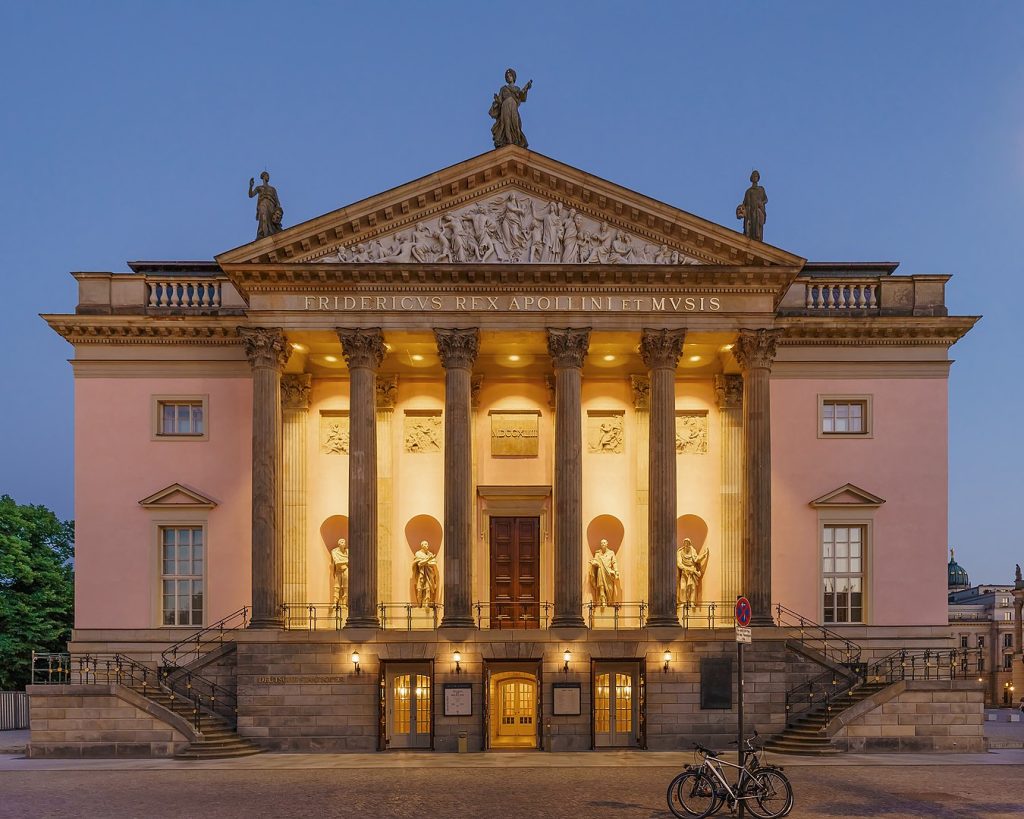
Along Unter den Linden are two unique edifices that have shaped the intellectual and cultural face of Berlin for centuries: Humboldt University and Berlin State Opera (Staatsoper Unter den Linden).. The two buildings are not only architectural pearls of the avenue, but more importantly places of science and art meet history.
💠 Humboldt University - the cradle of modern science
Established in 1810 on the initiative of Wilhelm von Humboldt, the university was the first institution in Europe to combine scientific research with teaching. Such giants as the following studied and taught here. Albert Einstein, Max Planck, Karl Marx or the Brothers Grimm. The university's headquarters - the former Prince Heinrich Palace - is located directly on Unter den Linden.
💠 State Opera - the heart of musical Berlin
Opposite the university rises the Staatsoper Unter den Linden, established as early as in 1742 By King Frederick II. It is one of the oldest and most important operas in Germany, famous for its outstanding directors, world premieres and excellent acoustics. The edifice, repeatedly rebuilt after fires and war, impresses with its classicist facade and rich interior.
💠 Two worlds - one avenue
It is here, in a stretch of just a few hundred meters, that the following meet the academic world and the art world, creating the unique atmosphere of Unter den Linden. Students, music lovers and tourists pass by these historic walls every day, continuing a centuries-old tradition of culture and knowledge in the heart of Berlin.
6️⃣ Temples and palaces - architecture along Unter den Linden
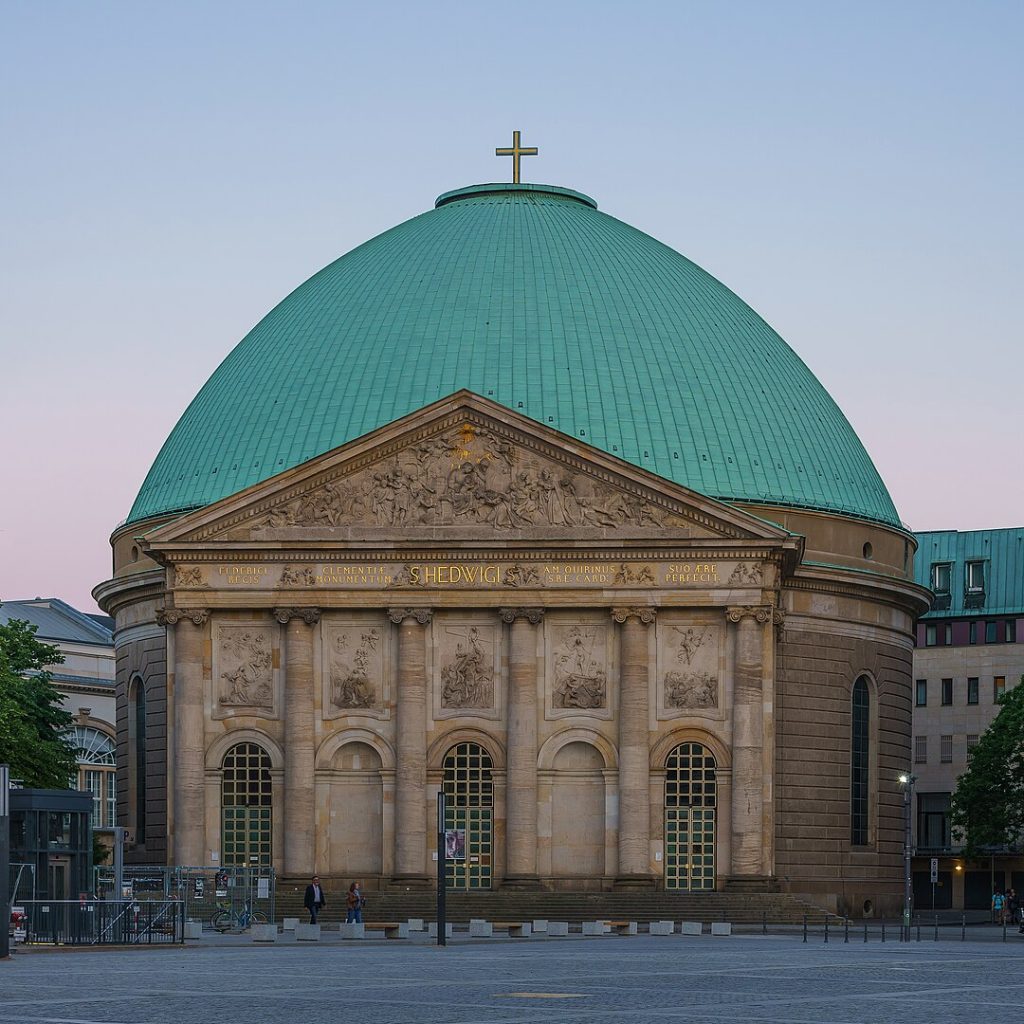
Unter den Linden is not just a royal avenue - it is also a sacred and residential space, where the diverse architecture reflects the spiritual and political richness of old Berlin. Walking along this route, you can admire the churches, palaces and state edifices, which create a unique, multi-layered story about the city.
💠 St. Hedwig's Cathedral (St. Hedwigs-Kathedrale).
It's The first Catholic church in Protestant Berlin, founded by King Frederick II in the 18th century. Inspired by the Roman Pantheon, it stands out round dome and neoclassical style. It still serves as the cathedral of the Berlin archdiocese and symbolizes the city's religious diversity.
💠 Prussian Prince's Palace and Neue Wache
Along the avenue there are also representative secular buildings. Palace of the Prince of Prussia is today the home of Humboldt University, while the Neue Wache, formerly a guardhouse, now serves as memorials to victims of war and tyranny. Its austere interior with the sculpture "Mother with a Dead Son" is moving in its simplicity and power of expression.
💠 A wealth of styles and features
The architecture of Unter den Linden is A mixture of baroque, classicism, neo-renaissance and modernism. From royal residences to modern institutional edifices, each building tells a different chapter of history. Thanks to this, the avenue not only connects points on the map, but also epochs and ideas, creating a unique cultural landscape.
7️⃣ Unter den Linden Walk - what to see along the way?
🔭 Think you know everything about Fernsehturm?
👉 10 interesting facts about Berlin's TV Tower that will surprise you
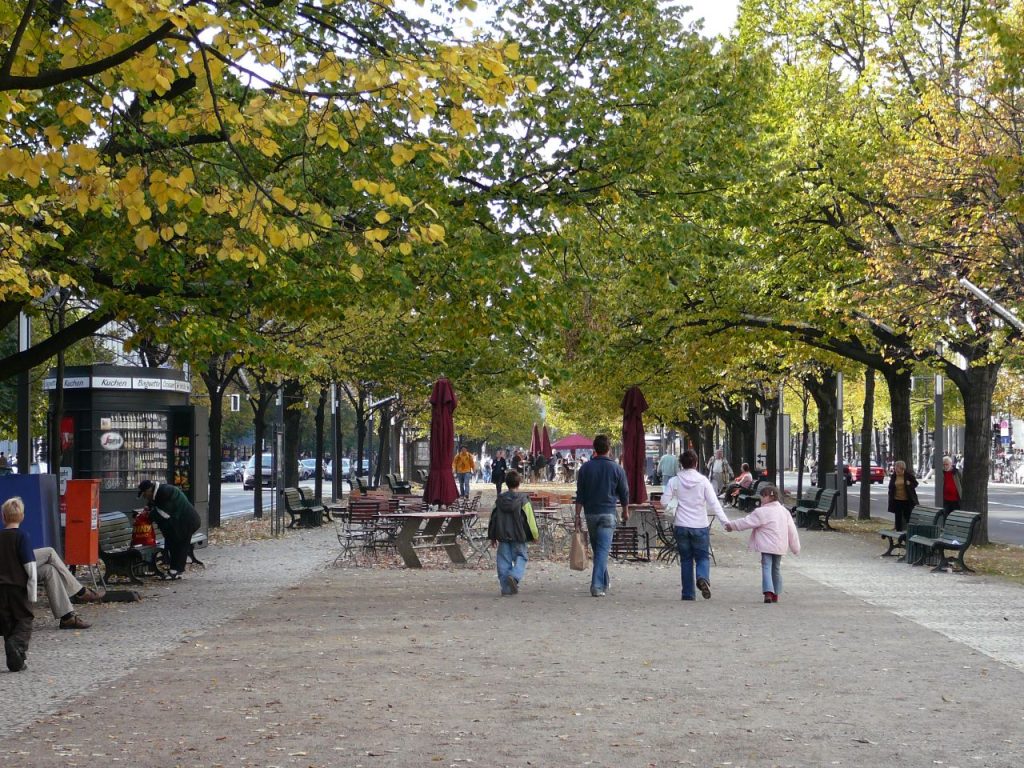
Walk down the avenue Unter den Linden is a true journey through the centuries - from royal splendor to modernity. On a stretch of just 1.5 kilometers await us iconic monuments, memorials, cultural institutions and lively cafes. This is one of those places where history and modernity go hand in hand.
💠 From the Brandenburg Gate to the Museum Island.
It is a good idea to start your hike at Brandenburg Gate, and end at the bridge Schlossbrücke, which leads directly to Museum Island (Museumsinsel) - UNESCO-listed complex. Along the way we will pass, among others. Monument to Frederick the Great, Humboldt University, State Opera, New Rehab (Neue Wache) and State Library.
💠 Cafes, bookstores, galleries
Unter den Linden is not only monuments - it is also a cultural and social life of the city. The historic townhouses house stylish cafes, elegant bookstores and art galleries. This is the perfect place to sit for a while and feel the atmosphere of Berlin - an open, creative and dynamic city.
💠 Walk at any time of day
The avenue delights both during the day, when its architectural details can be admired in full light, as well as after darkwhen elegant illuminations add to its romance. This is an ideal walking route - for a tourist, student, art lover or just a stroller looking for a respite in the city center.
8️⃣ Avenue in the shadow of history - destruction and reconstruction after the war
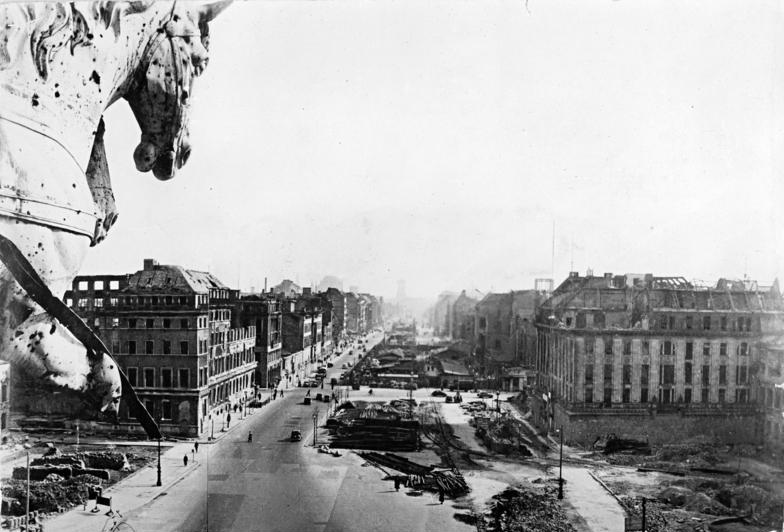
Although today Unter den Linden once again resplendent in its elegance and bustling with life, went through a turbulent period of the 20th century that forever left its mark on its architecture and identity. World War II, the division of Berlin and the years of communism have made the avenue not only a symbol of the past, but also a testimony of survival and renewal.
💠 Destruction during World War II
As a result allied bombing, many historic buildings along Unter den Linden lay in ruins. Among those that suffered were. State Opera, City Palace, numerous townhouses and university buildings. The avenue lost its representative character and for many years was a shadow of its former glory.
💠 The GDR years and socialist architecture
After the war, Unter den Linden found itself within the boundaries of the East Berlin. The GDR authorities began a gradual reconstruction, but many edifices were reconstructed with simplifications, and some - like the City Palace - were completely demolished. In their place, new buildings were constructed in socialist realist style, which changed the character of the avenue for a long time.
💠 Reconstruction and revitalization after reunification
After the reunification of Germany in 1990, an extensive revitalization of Unter den Linden has begun. Historic facades have been restored, the avenue has been restored linden trees, and over time even the Berliner Schloss as Humboldt Forum - A modern cultural center. Today, the avenue once again shines with its former splendor, connecting the memory with modernity.
9️⃣ What's nearby? Museum Island, Alexanderplatz and more
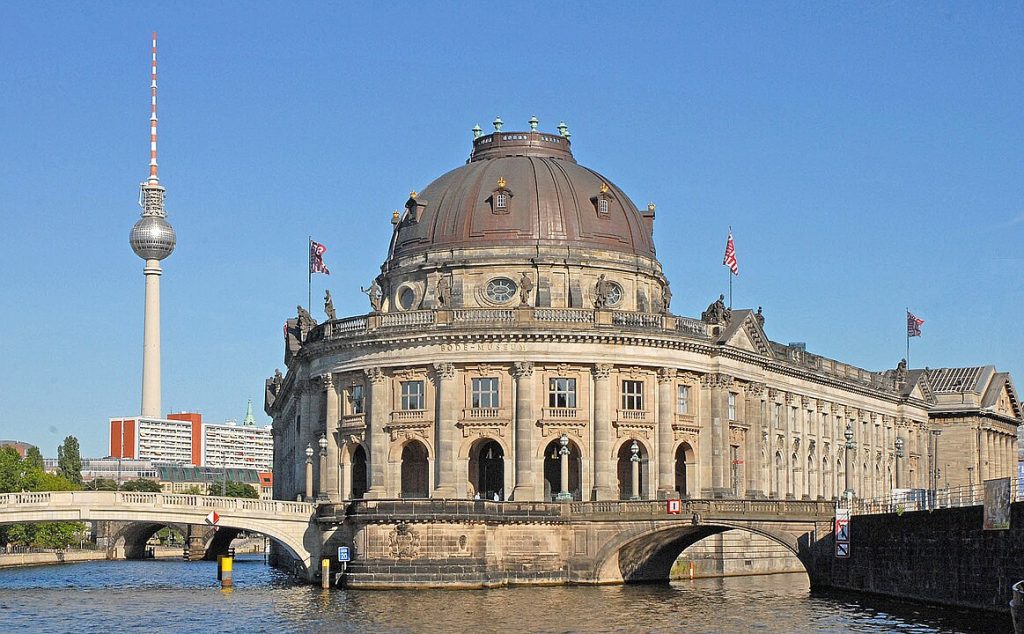
Walking down Unter den Linden, you're in the heart of Berlin - and you're in the heart of Berlin. surrounded by the city's most interesting attractions, which you can reach on foot in just a few minutes. The avenue not only connects history and culture, but also provides an excellent starting point for further sightseeing.
💠 Museum Island (Museumsinsel)
At the eastern end of the avenue, just past the bridge Schlossbrücke, is located Museum Island - museum complex listed UNESCO, where you will see, among other things, the famous Nefretete at the New Museum, antiquities in the Pergamon Museum and European art in the Old National Gallery. This is one of the most important places for art lovers in the world.
💠 Alexanderplatz and the television tower
A few minutes walk away is the Alexanderplatz - A vibrant center of commerce and communication with a distinctive Television Tower (Fernsehturm). The observation deck offers a panoramic view of the entire city, while stores, restaurants and the typical Berlin hustle and bustle await on the square.
💠 Gendarmenmarkt, Nikolaiviertel and Friedrichstraße
To the south of the avenue, visit the elegant Gendarmenmarkt with its twin cathedrals and Philharmonic Hall, romantic Nikolaiviertel - Berlin's oldest district with its atmospheric pubs, as well as the Friedrichstraße shopping street, where you'll find boutiques, fashion houses and galleries.
🔟 How to get there and when is the best time to visit Unter den Linden?
Unter den Linden is an avenue that is easily accessible and well-connected - for tourists and Berliners alike. Whether you're coming for the first time or know the city like the back of your hand, you'll get here without a problem By metro, streetcar, bus or on foot.
💠 Public transportation
The most convenient means of transportation is U-Bahn metro - line U5 has a station Unter den Linden, right at the intersection with Friedrichstraße. Nearby there are also stations S-Bahn Friedrichstraße, as well as numerous bus and streetcar stops. From Brandenburg Airport you will get here in about 40 minutes regional railroad.
💠 On foot or by bicycle
Unter den Linden is the perfect avenue to explore on foot - Wide sidewalks, an avenue of trees, benches and numerous pedestrian crossings make walking a pleasure. You can also take advantage of the urban bicycles, whose stations are spread along the route.
💠 When is the best time to go?
Every season has its charm - in spring and summer The avenue is drowning in greenery, in autumn it delights with the colors of the leaves, and in winter - with Christmas illuminations. If you want to avoid the crowds, it is best to go weekday mornings. In the evening, meanwhile, the avenue takes on a romantic atmosphere - perfect for a stroll or dinner at one of the nearby restaurants.
🟩 Summary - Unter den Linden: the heart of historic Berlin
Unter den Linden is much more than a representative avenue. It's vivid timeline, leading through the eras - from the royal parades of Frederick the Great, through the ruins of World War II, to modern Berlin, teeming with art, science and culture.
A walk along this route is a journey through key moments in the history of the city - with the monumental Brandenburg Gate, monuments, universities and opera houses at your fingertips. It is here that the architecture, history and daily life, and every tree, building and square has a story.
For a tourist, it's a must-see; for a Berliner, it's a place for strolling, meeting and reverie. No matter the season or the weather, Unter den Linden impresses - with elegance, rhythm and depth. This is where the heart beats historic Berlin.

